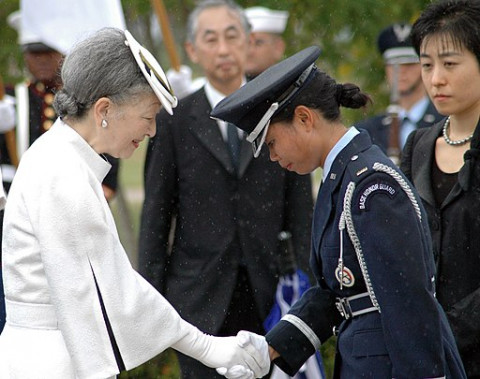The Role of Royalty in Japanese Culture: Some Fast Facts!
News of the abdication of Japan’s Emperor Akihito has made the Japanese monarchy the biggest trending online search term today.
As the ‘father of the nation’, the monarch is an essential part of Japanese culture.
So if you know very little about Japanese royalty, but want to be part of the online buzz, then here are some quick and easy insights to get you going.
• The Japanese monarchy dates back at least 1,500 years, making it the oldest continuous hereditary monarchy in the world.
• Emperor Akihito has been in power for 30 years with ill health cited as the reason for his abdication. It’s interesting to note that this is the first abdication in over 200 years. The period of rule for Emperor Akihito has been known as the Heisei era (meaning ‘peace in heaven and on earth’) whereas the era of his successor will be known as the Reiwa era, meaning ‘beautiful harmony’).
• Japanese monarchs were previously considered deities. It was only when Japan was defeated in the second world war that the Emperor was forced to denounce his divine status and accept the position of figurehead instead. As part of this transition, he also lost all political authority.
• The current royal family live in the Tokyo Imperial Palace, which is considered to be one of the most expensive pieces of real estate in the world. If you haven’t already seen the palace, then it’s definitely worth doing an online search as the architecture beautifully reflects the incredible craftmanship of traditional Japanese culture. The palace is in direct contrast to the modern glass and steel constructions that surround it. Although the palace isn’t open as such to the Japanese people, it’s become the venue for many important cultural and national events; making it an essential part of Japanese heritage, traditions and culture.
• Due to the Sallic laws of inheritance, Emperor Akihito will be replaced by his son. Women are not allowed! Prior to 1889 however, this wasn’t the case in Japanese culture and women were able to take the throne. Current rules also mean that women who marry outside the royal family lose their royal status and become commoners.
• The loss of power following the second world war also resulted in much of the family’s wealth being stripped away. As such, the Japanese royal family have limited assets when compared to the assets of royal families in other parts of the world. However, what the common person in Japan might consider being limited is very different for the royal family! As with monarchies across the world, the taxpayer funds their lifestyle. Until his abdication, Emperor Akihito, for example, has had an on-call 24-piece orchestra which certainly doesn’t suggest that life is particularly tough!
• In a cultural sense, the Japanese have a great deal of respect for the royal family which is evident in the absence of a republican movement in Japan. The family are generally much loved and well respected.
So, as we welcome the Reiwa era, we can assume that the Japanese monarchy will continue to play just as an important role in Japanese culture and identity.
Although some people are suggesting that the Reiwa era might also see a change to the Sallic laws of inheritance, our feeling is that the traditions and culture of the Japanese royal family will continue largely undisturbed.
Are you a business professional that needs to work successfully with Japanese colleagues?
Then stay one step ahead of the competition and make the best impression possible by taking our free course!
You can watch it here, on YouTube or over the course page where you will also find free downloads and a quiz.
Main image from Wikimedia. (June 28, 2005) – U.S. Air Force 2nd Lt. Kazumi Udagawa bids farewell to the empress of Japan at the American Memorial Park during a historic visit by the royal family of Japan. Japanese Emperor Akihito and Empress Michiko made their first-ever trip to commemorate a World War II battle. The royal couple took time on Saipan to visit sites and monuments that remember Japanese, island civilian and American fallen service members in order to affirm the friendship that has grown between Japan and the United States. U.S. Navy photo by Photographer’s Mate 2nd Class Nathanael T. Miller.
Related Posts
By accepting you will be accessing a service provided by a third-party external to https://www.commisceo-global.com/

 +44 0330 027 0207 or +1 (818) 532-6908
+44 0330 027 0207 or +1 (818) 532-6908
